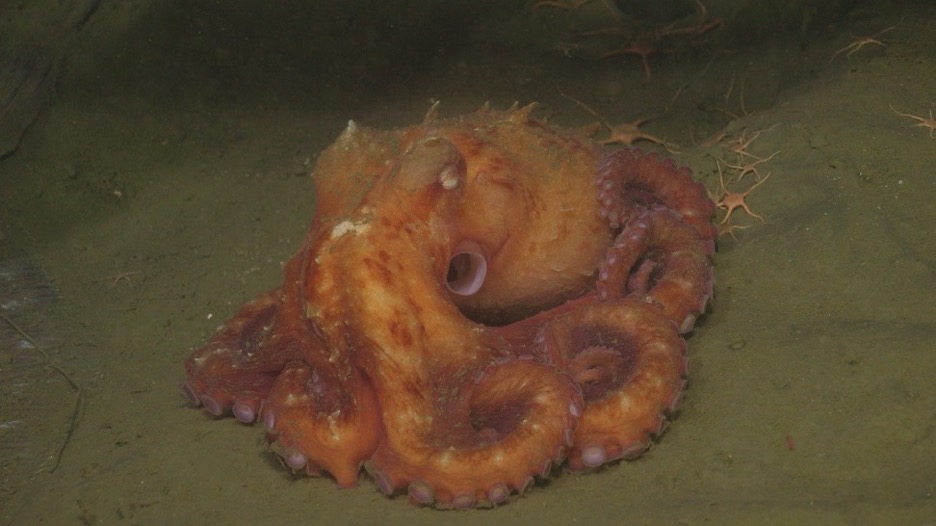Mission Complete: 23 Days at Sea
By Darlene Trew Crist and Debbie Kelley
23 days at sea.1200 miles of transit. 44 ROV Jason Dives. Over 80,000 lbs of equipment mobilized. Turned, deployed or recovered 225 pieces of infrastructure on the seafloor and in the water column. More than 500 hours of continuous livestreaming video from ship to shore through a satellite 22,000 miles overhead, and daily updates of cruise activities.
These numbers provide only a glimpse of what was accomplished by a team of scientists and engineers from the University of Washington (UW), pilots of the ROV Jason from Woods Hole Oceanographic Institution, and the captain and the crew of the R/V Thomas G. Thompson, during a nearly month-long expedition in the northeast Pacific Ocean to maintain OOI’s Regional Cabled Array (RCA), operated and maintained by UW. After a mandatory two-week quarantine, the scientific party departed aboard the R/V Thompson from Newport, Oregon on 1 August to begin the journey to replace and install equipment on the array. The ship returned to Newport on 13 August to offload the recovered equipment and load a new supply for the second Leg, which left on 15 August, finally returning to port on 26 August.
Funded by the National Science Foundation (NSF), the cruise was highly complex, involving a diverse array of ~109 Core instruments, three junction boxes, two Benthic Experiment Platforms, six instrumented pods on the Shallow Profiler Moorings, which were recovered and installed, and three Deep Profiler vehicles, which were turned. In addition, six instruments conducting scientific experiments for principal investigators external to OOI were recovered, one was installed and another turned.
While the overall mission was clear, the cruise plan remained flexible to allow the Chief Scientists to modify operations, as needed, depending upon weather conditions. The expedition traveled to all of the RCA sites — Slope Base, Oregon Offshore, Oregon Shelf, Southern Hydrate Ridge, and Axial Base and Axial Caldera, with multiple 22-hour transits to Axial Seamount.
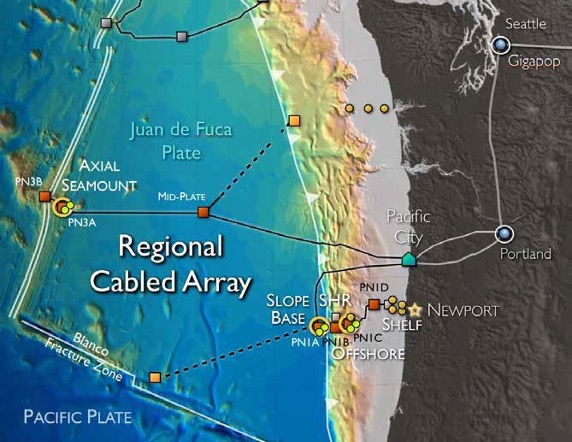
All Objectives Completed on Leg One
All instrument and platform installations scheduled for Leg 1 were completed by mid-day on 12 August during 26 dives. Six instrumented platforms on the Shallow Profiler Moorings and three instrumented Deep Profiler vehicles were turned, two junction boxes and over 80 instruments recovered and reinstalled.
Taking advantage of the good weather and the early completion of anticipated tasks, the RCA team transited to the Endurance Shelf site (80 meters), where they recovered several cabled platforms and instruments that were planned for Leg 2 of the expedition. Again, taking advantage of ideal visibility at the seafloor there, the RCA team performed three Jason dives, successfully recovering the Zooplankton Sonar, the Benthic Experiment Package (BEP), and a digital still camera.
After the completion of these dives, the R/V Thomas G.Thompson headed back to shore. The ship arrived at the NOAA Marine Operations Center-Pacific dock in Newport, Oregon on 13 August and began mobilization/demobilization for the changeover from Leg 1 to Leg 2 of the cruise.

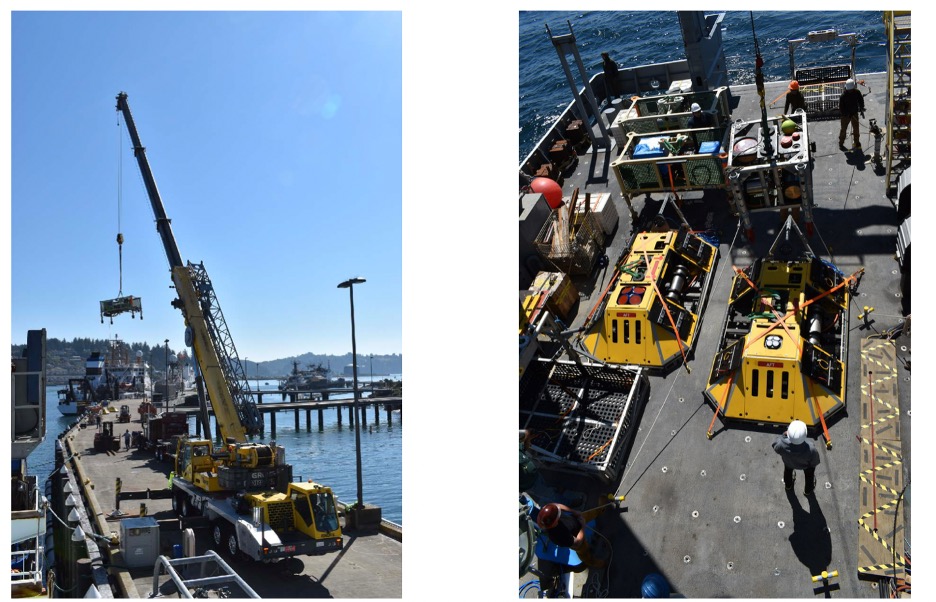
Weather Challenges on Leg Two
The ship departed from Newport again on 15 August and headed to the Endurance Array Oregon Shelf site to resume maintenance operations. There, the team deployed the cabled Zooplankton Sonar, however, installation of the BEP, which weighs over 3,000 lbs and is latched underneath Jason for installation and recovery, was postponed due to large swells.
The ship next transited over 300 miles offshore to Axial Seamount to complete the maintenance activities there. When the Thompson arrived at Axial, it successfully turned a secondary node at the Eastern Caldera site that provides power and bandwidth to a geophysical suite of instruments and now hosts a new CTD funded by NSF to Dr. W. Chadwick (one of three instruments for installation on the RCA as part of this award). It was a notable event because the junction box had been deployed on 22 July 2013 and had spent the last 2,583 days or 7.1 years in 1516 meters of water within Axial Caldera!
For the next eight days, cruise operations proceeded smoothly with intermittent weather delays. Even though weather was not completely cooperative, the team was able to complete a total of 14 dives during which they turned a BEP, two digital still cameras, two uncabled seafloor instruments, and a CTD. They also recovered three cabled instruments and an uncabled instrumented platform for principal investigators conducting research at Southern Hydrate Ridge. One dive was dedicated to an inspection and troubleshooting of Primary Node PN1B, which was offline.
Later in the cruise, weather put onboard activities on hold, however, a cohort of enthusiastic students onshore (due to COVID) virtually ‘visited’ the ship and Jason operations van as part of the NSF-funded STEMSEAS program, which provides at-sea experiences for undergraduates. The students had the opportunity to interact with Chief Scientist Brendan Philip, who completed his oceanography undergraduate and masters’ degree at the University of Washington, as well as a visit with two UW and Queens College undergraduate students sailing onboard as science aides as part of the UW VISIONS experiential learning program. They were also introduced to RCA engineers and members of the Jason team inside the control van.

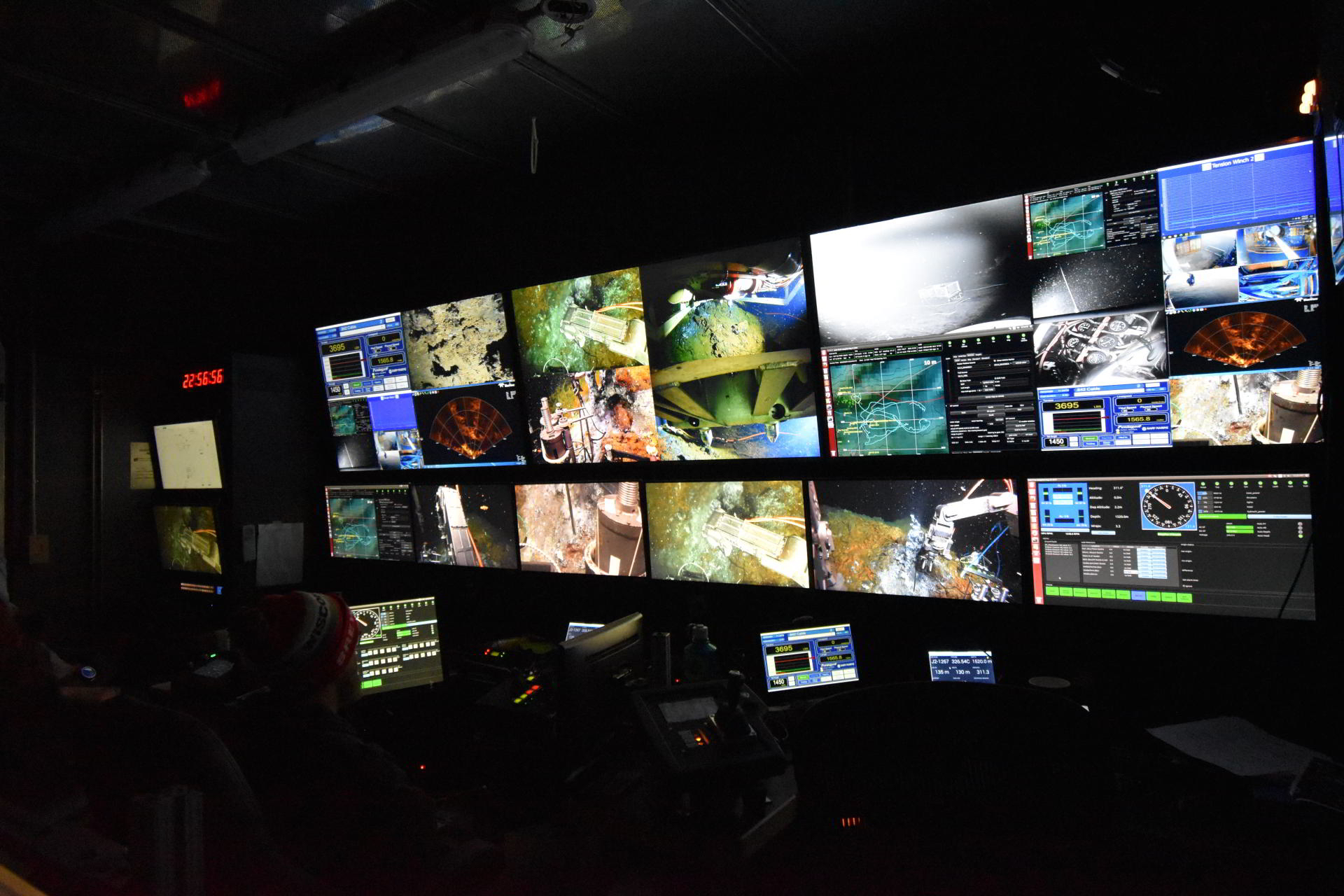
With lessening swell heights, the team completed RCA maintenance tasks at Southern Hydrate Ridge. Additional efforts were focused on the recovery of a cabled multi-beam sonar and a 4K camera funded by Germany to Drs. Y. Marcon and G. Bohrmann, Bremen University, to quantify methane flux and turning of a CTD. In addition, a methane microbial fuel cell platform was recovered as part of an Office of Naval Research (ONR)-funded project to Dr. C. Reimers (Oregon State University)—sailing as a member of the Leg 2 shipboard party. Upon completion of instrumentation work at Southern Hydrate Ridge, the Thompson transited back to the Endurance Array Oregon Shelf site to complete the remaining maintenance task, the deployment of the cabled BEP.
During the latter part of the cruise, weather again impacted what the team was able to do, but the science team continued to improvise to utilize ship time as efficiently as possible. For example, when winds (>20 knots) and large swells in the Shelf Area prevented the team from deploying the final (heavy) BEP, Dr. Reimers used some of her remaining ONR-supported at-sea time to conduct a Jason dive in the region of the West Coast Rockfish Conservation Area to survey fish, invertebrates, seeps, and trawl marks along a downslope transect. These data will be useful for collaborative work between Oregon State University and the Oregon Department of Fish and Wildlife scientists in decision-making about the reopening of the region in 2020, after 19 years of being closed to bottom trawling.
When the weather cleared, the team performed its final maintenance task of the cruise. They deployed the cabled Shelf BEP in 80 meters of water, after which the ship headed back to Newport to reunite with friends and family after six weeks away. The expedition ended having met all objectives, in spite of the weather.
Unique Views of the Seafloor
The RCA expedition literally offered a “bird’s eye view” of seafloor life. Below is a collection of some of the activities conducted and life witnessed on the seafloor.
Crab-infested Primary Node
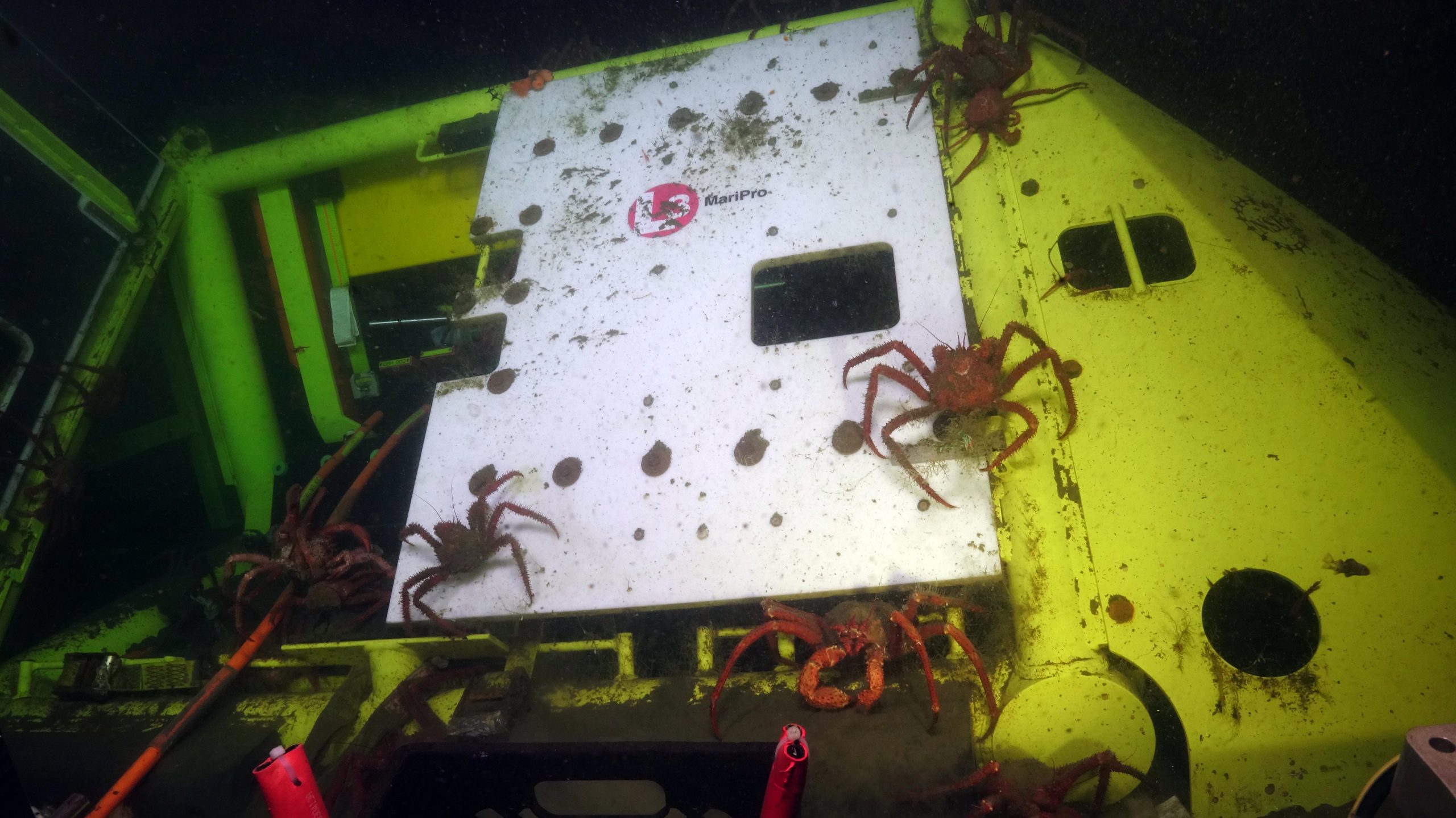
Octopus Abound
Islands of Sea Life
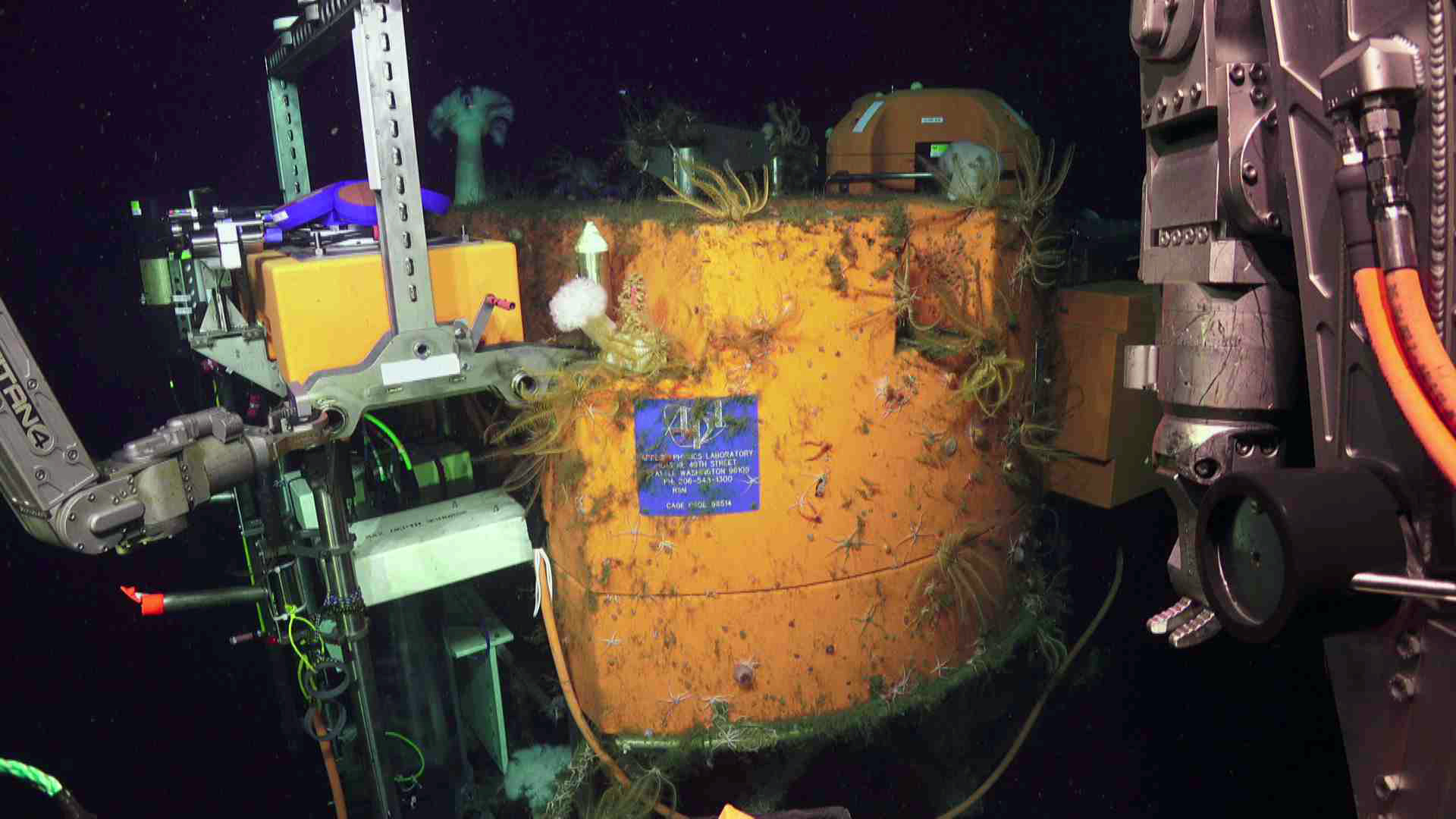
Big Red
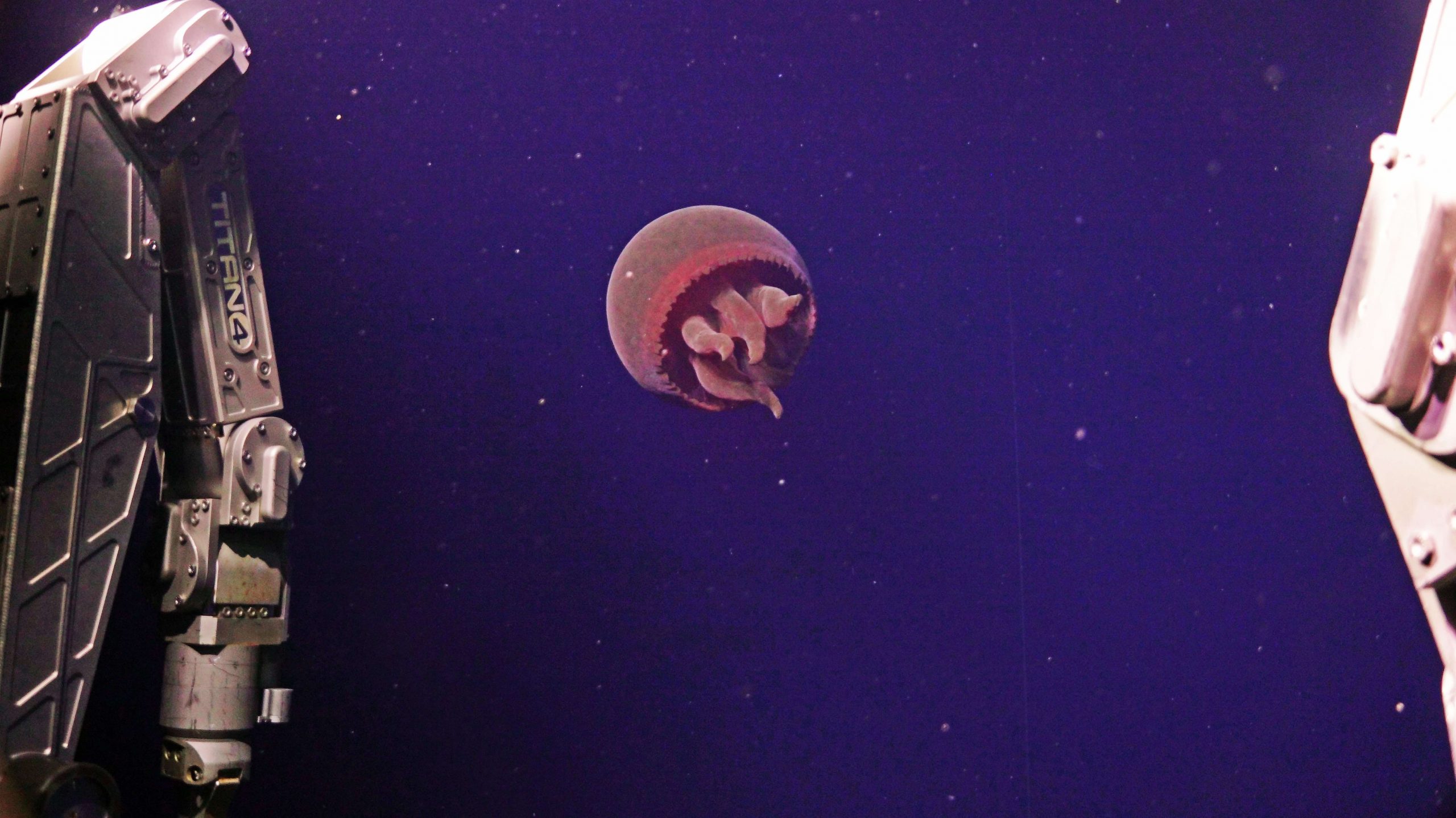
Methane Seeps
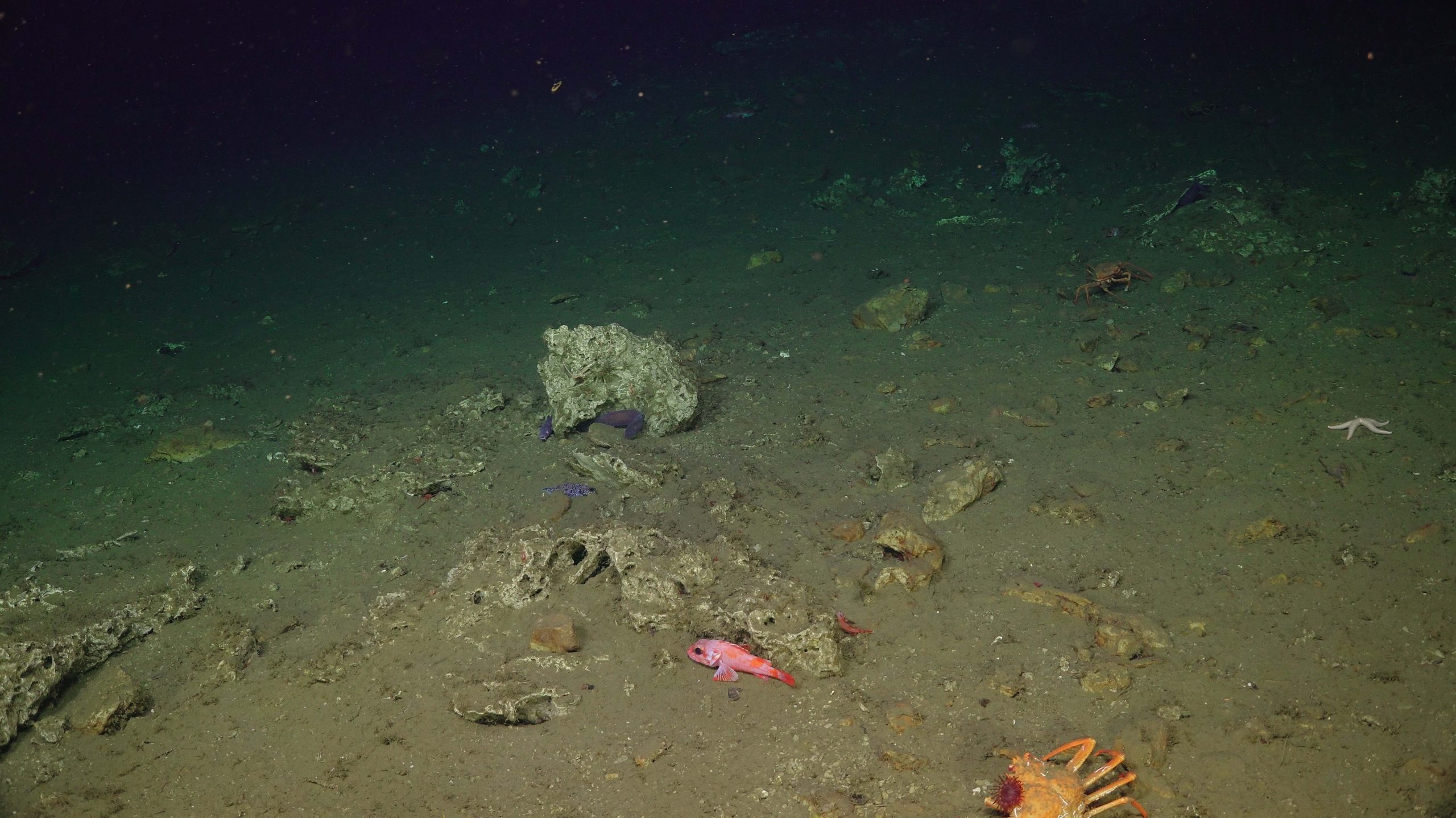
Axial Seamount Summit


